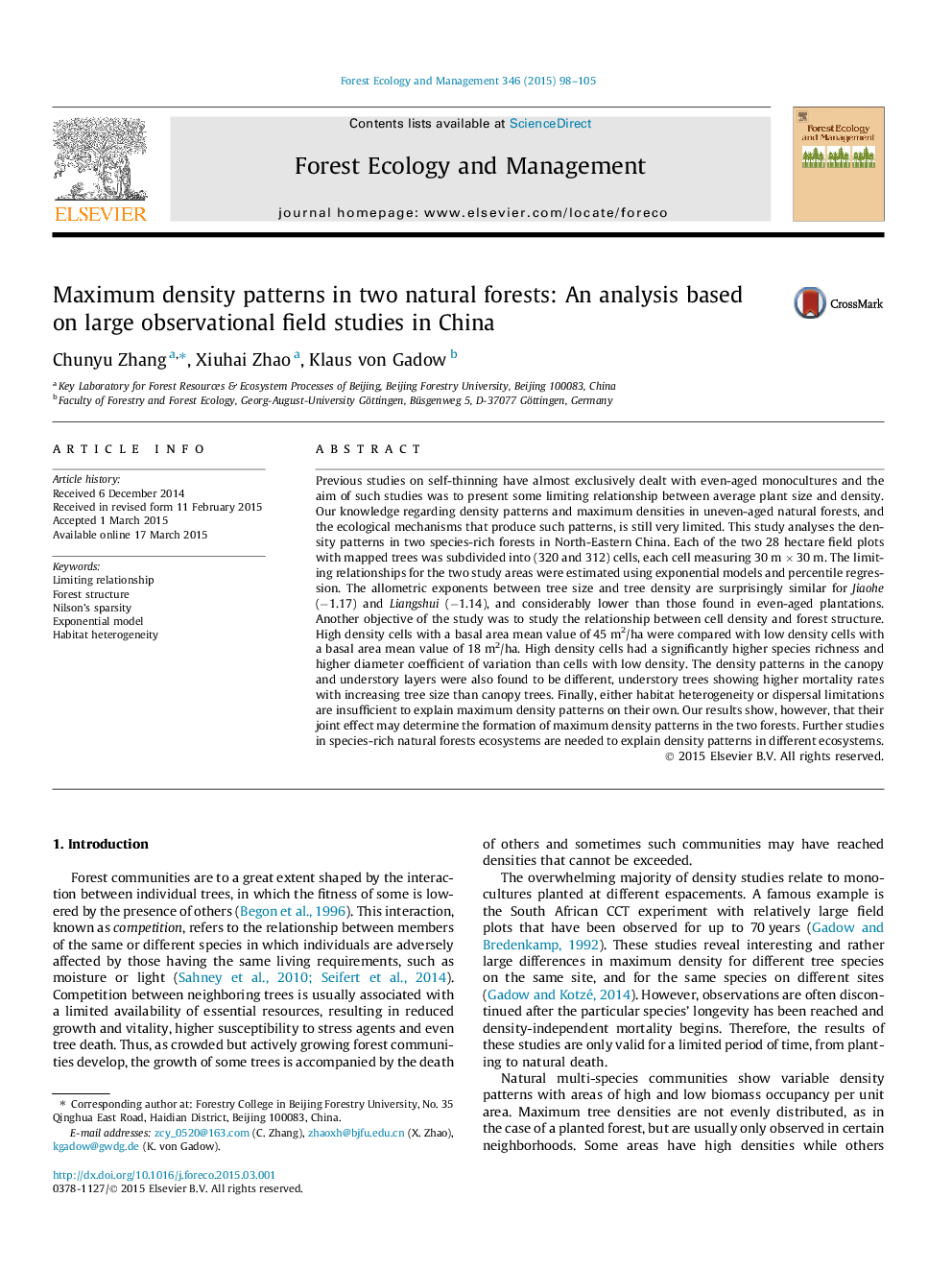| Article ID | Journal | Published Year | Pages | File Type |
|---|---|---|---|---|
| 86333 | Forest Ecology and Management | 2015 | 8 Pages |
•Allometric exponents between tree size and density are between −1.2 and −1.1.•Density patterns in the canopy and understory layers were found to be different.•Joint effects of habitat heterogeneity and dispersal determine maximum density.
Previous studies on self-thinning have almost exclusively dealt with even-aged monocultures and the aim of such studies was to present some limiting relationship between average plant size and density. Our knowledge regarding density patterns and maximum densities in uneven-aged natural forests, and the ecological mechanisms that produce such patterns, is still very limited. This study analyses the density patterns in two species-rich forests in North-Eastern China. Each of the two 28 hectare field plots with mapped trees was subdivided into (320 and 312) cells, each cell measuring 30 m × 30 m. The limiting relationships for the two study areas were estimated using exponential models and percentile regression. The allometric exponents between tree size and tree density are surprisingly similar for Jiaohe (−1.17) and Liangshui (−1.14), and considerably lower than those found in even-aged plantations. Another objective of the study was to study the relationship between cell density and forest structure. High density cells with a basal area mean value of 45 m2/ha were compared with low density cells with a basal area mean value of 18 m2/ha. High density cells had a significantly higher species richness and higher diameter coefficient of variation than cells with low density. The density patterns in the canopy and understory layers were also found to be different, understory trees showing higher mortality rates with increasing tree size than canopy trees. Finally, either habitat heterogeneity or dispersal limitations are insufficient to explain maximum density patterns on their own. Our results show, however, that their joint effect may determine the formation of maximum density patterns in the two forests. Further studies in species-rich natural forests ecosystems are needed to explain density patterns in different ecosystems.
